Fun with photography...capturing your pet's personality
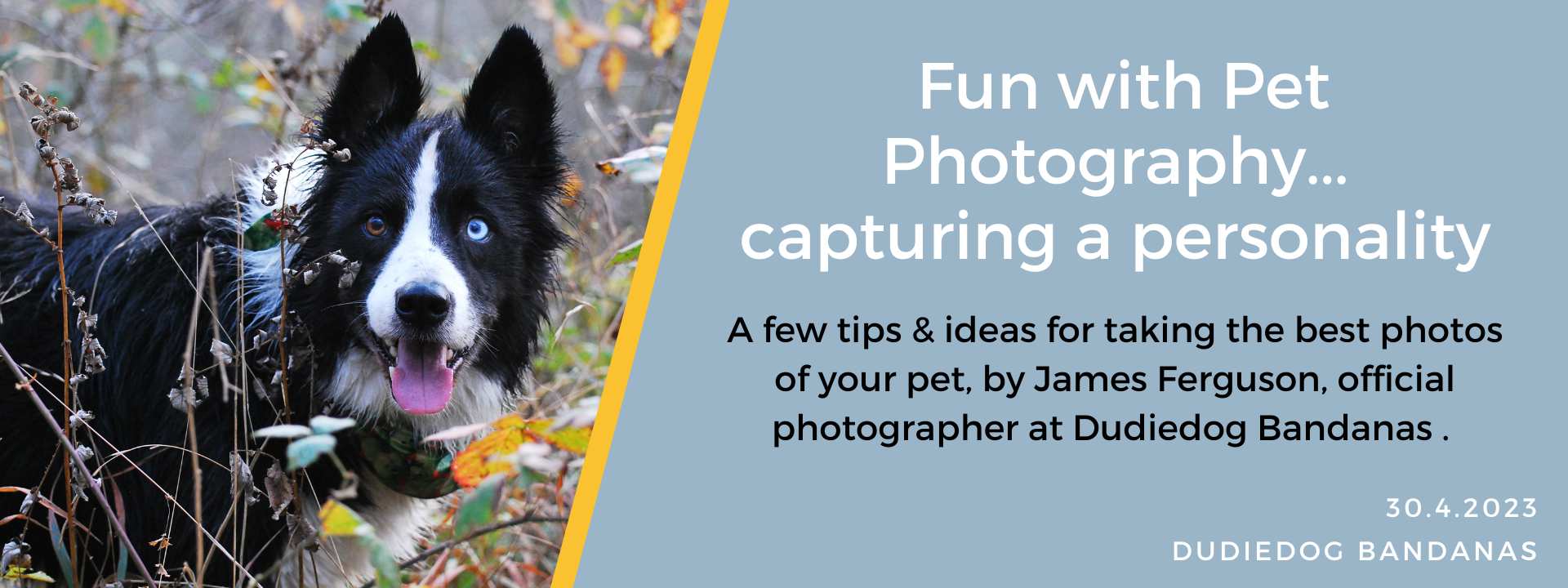
PET PhoTography tips and hints
Hi, James here (aka Mr Dudiedog I suppose) with a few tips and hints I have worked out / learnt over the years trying to take photos of dogs, mostly Skye Blue of course. Hopefully there will be something below which can help you take a pleasing photo of your dog (or other significant animal/s in your life!).
A quick word on treats before we get on to the actual photography. Treats can be a useful incentive if you're hoping for your pet to pose, but I find that the better photos come when Skye Blue is just getting on with life, doing his own thing. Always have a few in your pocket just in case. (We use them when Skye Blue is posing for his modelling shots...this is when he expects them!)

Skye Blue in Autumn
Over the years I have used a few types of 'image-taking machines' - ranging from my big camera and lenses, which I tend to use for many of the better photos we use on the website and social media, to the very basic one on my cheapo phone. There are whole libraries of information out there on this subject and I can't hope to cover everything - and I don’t know it all anyway! This can only just be an introduction to the subject. Don’t worry too much about the techy stuff - locations and angles of photos are more important really.
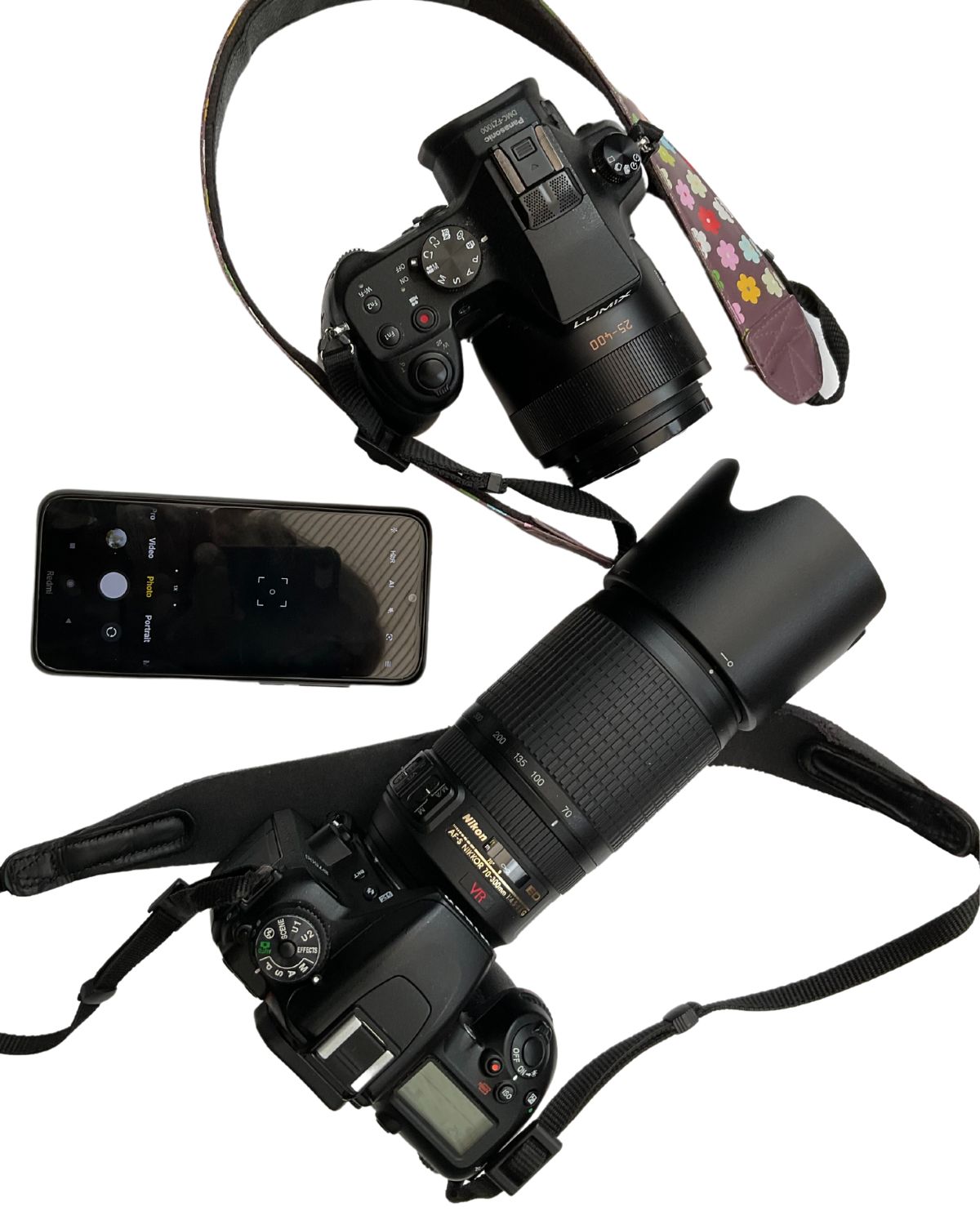
Cameras and phones
EQUIPMENT
You don’t have to have an expensive camera to take photos of your dog! Even my phone (which only cost c.£100) has a few settings in the camera mode to adjust some basic parameters for taking photos. Mostly of course I just leave it on whatever factory settings it has, but if I'm feeling creative I can press a couple of ‘virtual buttons’ on the screen and adjust the ways the camera will capture an image. Unlike the days of film cameras you can happily play about and usually find a setting you like.
Start with inanimate objects first though - by the time you’ve faffed about trying things 'Fido' will have hit the horizon in boredom! Or maybe that’s just Skye Blue… ![]() You’ll soon work out which setting/s work best for you.
You’ll soon work out which setting/s work best for you.
Small compact cameras of course can do more, and the large DSLRs more again, with better options for adjusting the settings to what you want to achieve. There are 3 adjustments most photographers make when setting up their cameras - the speed at which the shutter inside exposes the image to the film /sensor (abbreviated to S/S); the amount of light which is let into the camera (the aperture, denoted by the letter f); and how sensitive the film / sensor is to the light hitting it (the ISO setting). The first two settings are adjusted more often than the ISO, which is often set up for the daylight on the day in question. For the purposes of this blog I wouldn’t worry about the ISO at all!
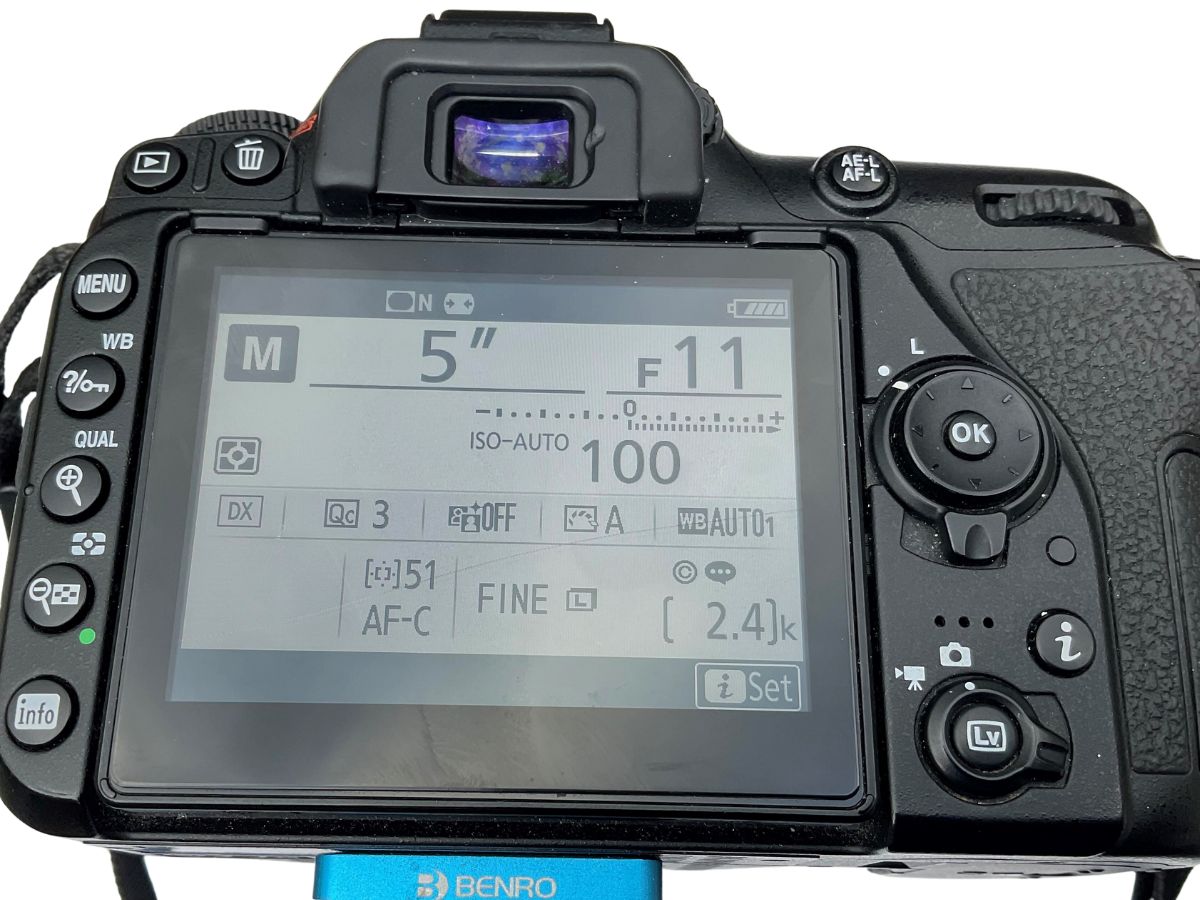
Back of DSLR showing settings
.png)
The camera settings on your phone will look more like this.
TECHNICAL TECHNIQUES
Ideally you will want to capture your animal in focus, so that Fido is not blurry at all. For this you need either Fido to be sitting still or your camera tracking him/her so the image is steady in the viewfinder / screen. But don’t worry too much about this if you can increase the speed at which you take your photo. I normally have a shutter speed of at least 1000/second and try to have an aperture setting of at least f8. The lower your aperture number (can go down to 1.4) then the shallower the depth of field of focus. If you're not careful though you can end up with Fido’s nose in focus but not his/her eyes or ears!
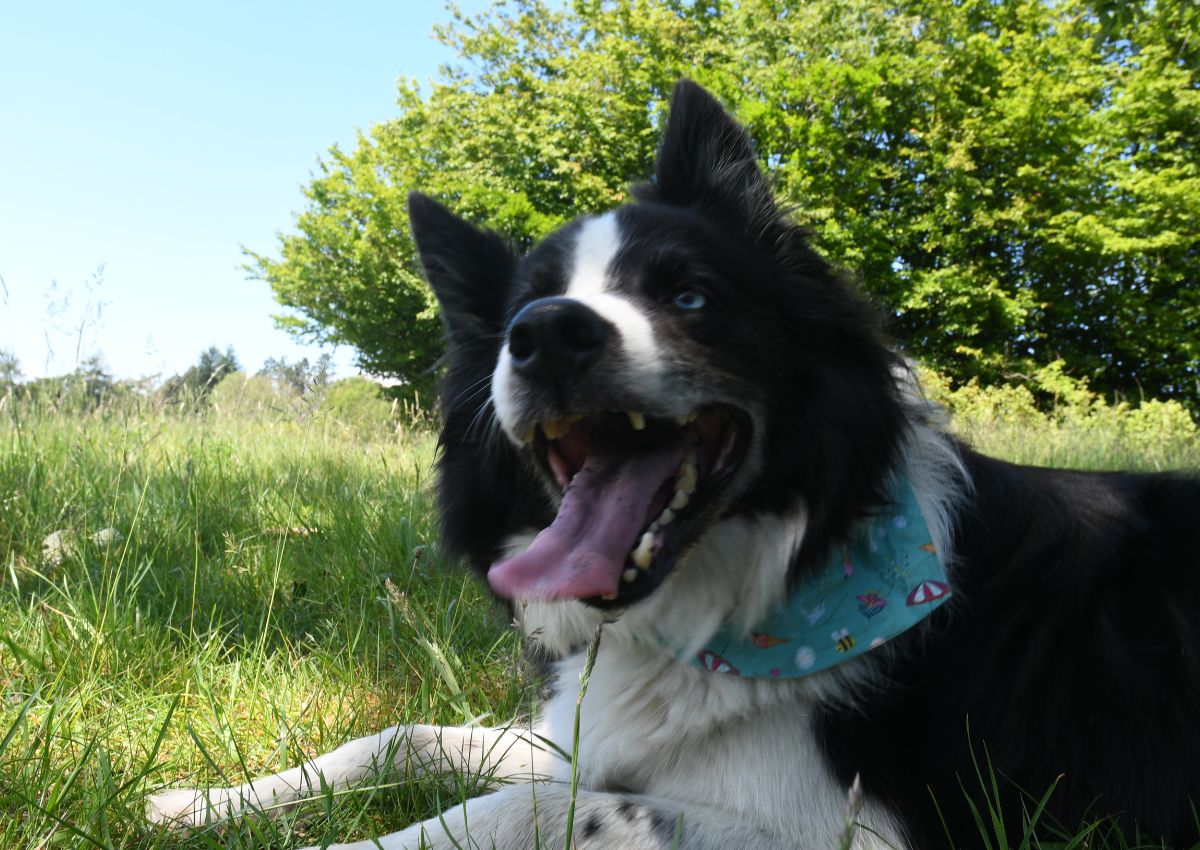
SBs legs are in focus but not much else! This was aperture f1.8, S/S 1/500.
So you might reasonably think that a big aperture (they can go up to f22) is the way to go - hmmm, not always…yes with a big number aperture you have a deeper depth of field of focus but to cram all the information in to the image it slows the shutter speed down, which isn't ideal for a moving target such as an animal! It is a balancing act between shutter speed and aperture, usually ending up somewhere in the middle. If you can adjust these parameters then I would start with 1000/sec shutter speed, leave the aperture (and ISO) to the camera and concentrate on more easily controlled factors such as location etc.
But equally the more rewarding when it comes off - I have literally tens of thousands of photos of Skye Blue - the vast majority of which I would never normally show anyone. But if I can have half a dozen out of a hundred or more on a walk then that isn’t too bad and as time goes by the strike rate improves. With digital photography it is so much easier than the old days when I was a student using film!
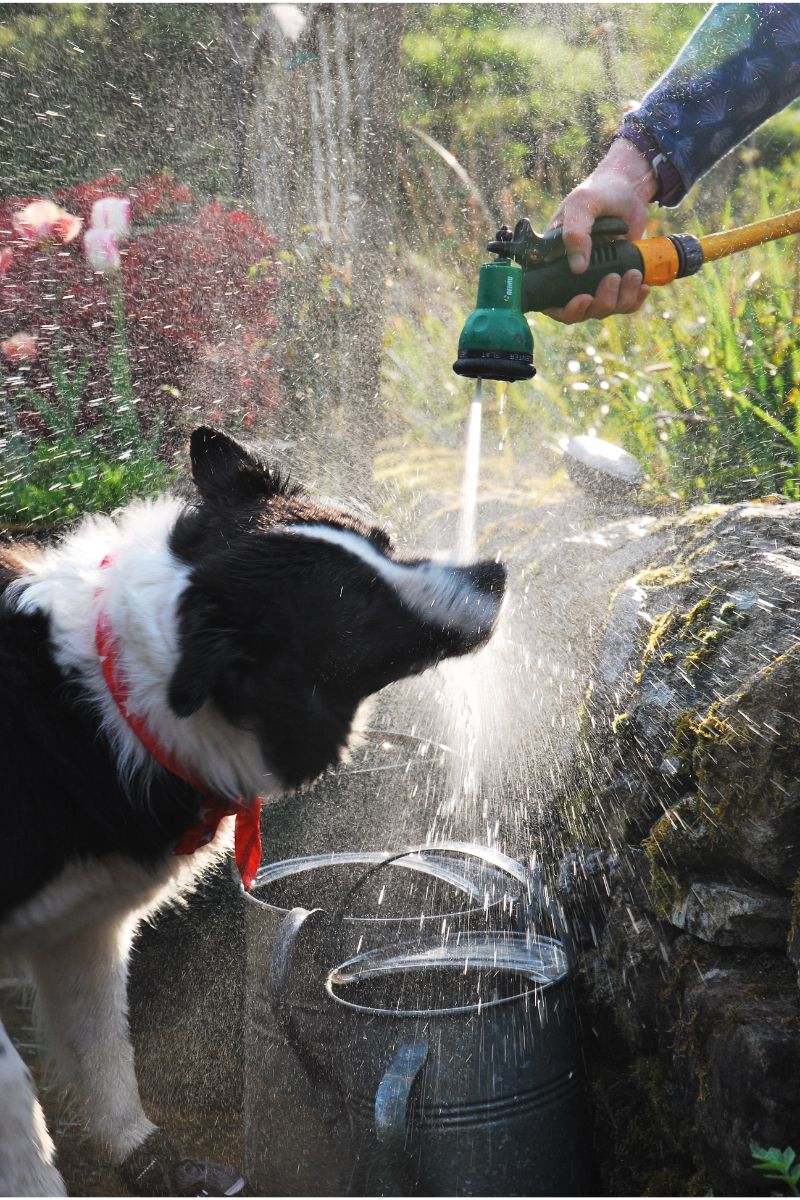
The hand is in focus, but the subject is moving... S/S 200, f1.8
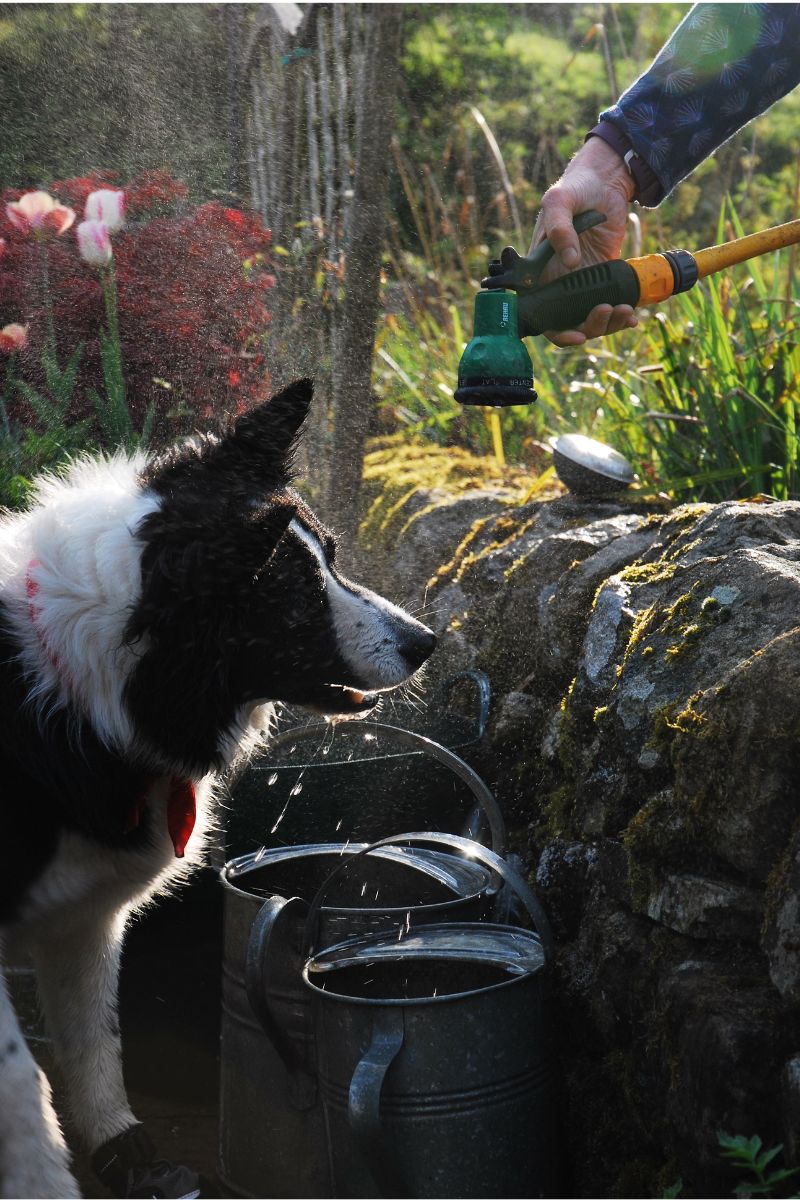
All in focus, but no water...S/S 1/500 f5.6
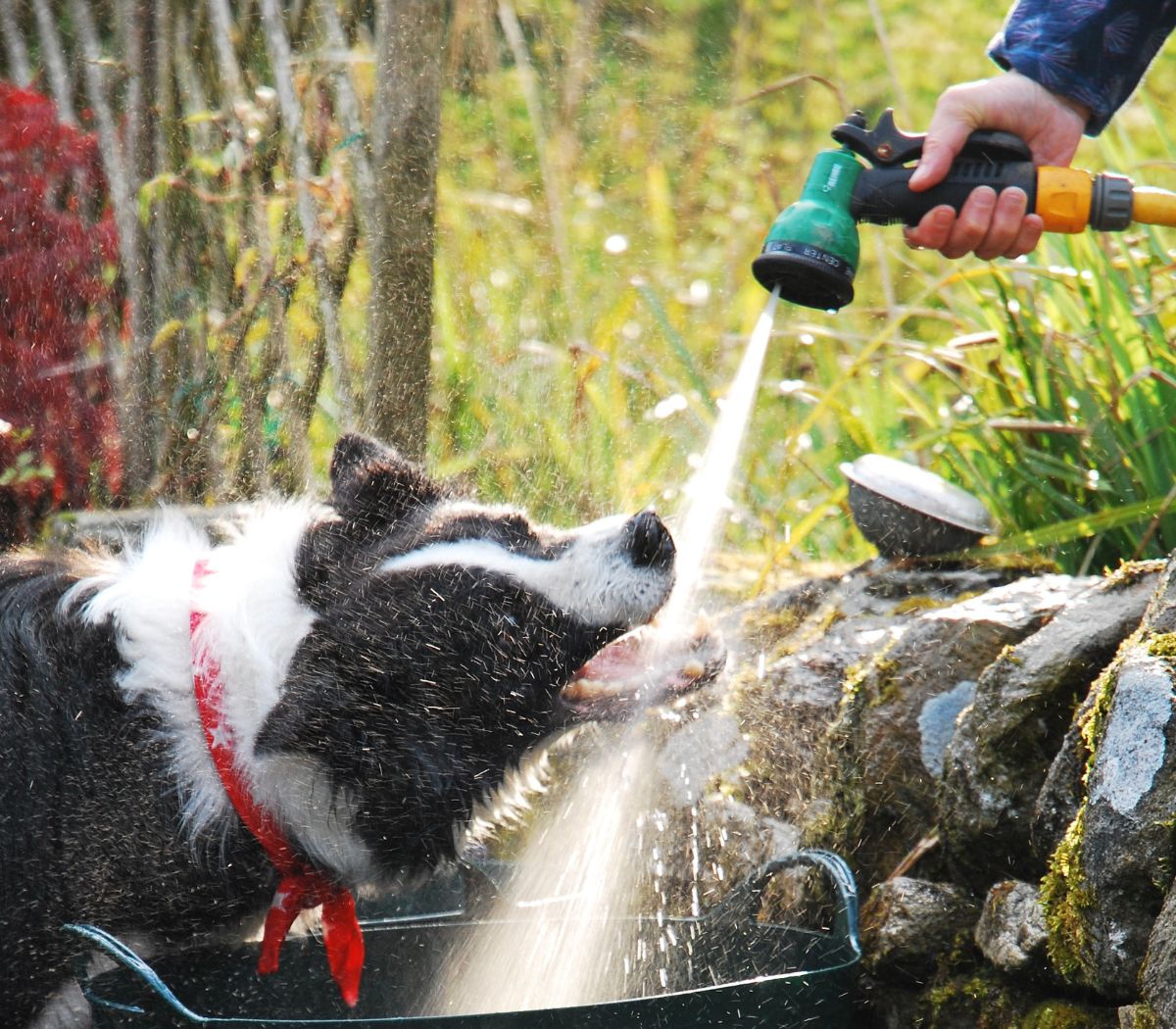
Ah ha! That's more like it...S/S 1/1000 f5.6
LOCATION
Try to capture the essence of Fido - their character. Do they love water / chasing balls / walkies with their family / and so on. The more active they are the harder it can be! You don’t really want the back of their head so will need to make them stop, get ahead and then try to call them to you. But beware - a moving dog, esp if speedy, coming towards you is about the hardest thing to capture! The camera cannot always focus fast enough to avoid a blurred animal. So one way round it is throw a ball, or have an assistant off to one side, so Fido travels across in front of you side to side. This maintains the distance from you, making things easier for the camera / you. All you need to do is follow her/him and take an image as you move your phone / camera in parallel - this is a tracking shot. Don’t be static and hope to capture as they pass the camera/phone!
Tracking shot. S/S 1/1000 f1.8 (this was quite a long way away - distance adds depth of field...It can be so complicated!)
FRAMING
Try to have a ‘clean’ background. Not too busy - hard to achieve sometimes…Also, you don’t need their whole body - try a close up of her/his head or eyes or paws. Look through / between their ears and try to capture what they are seeing. Unusual angles are also fun.
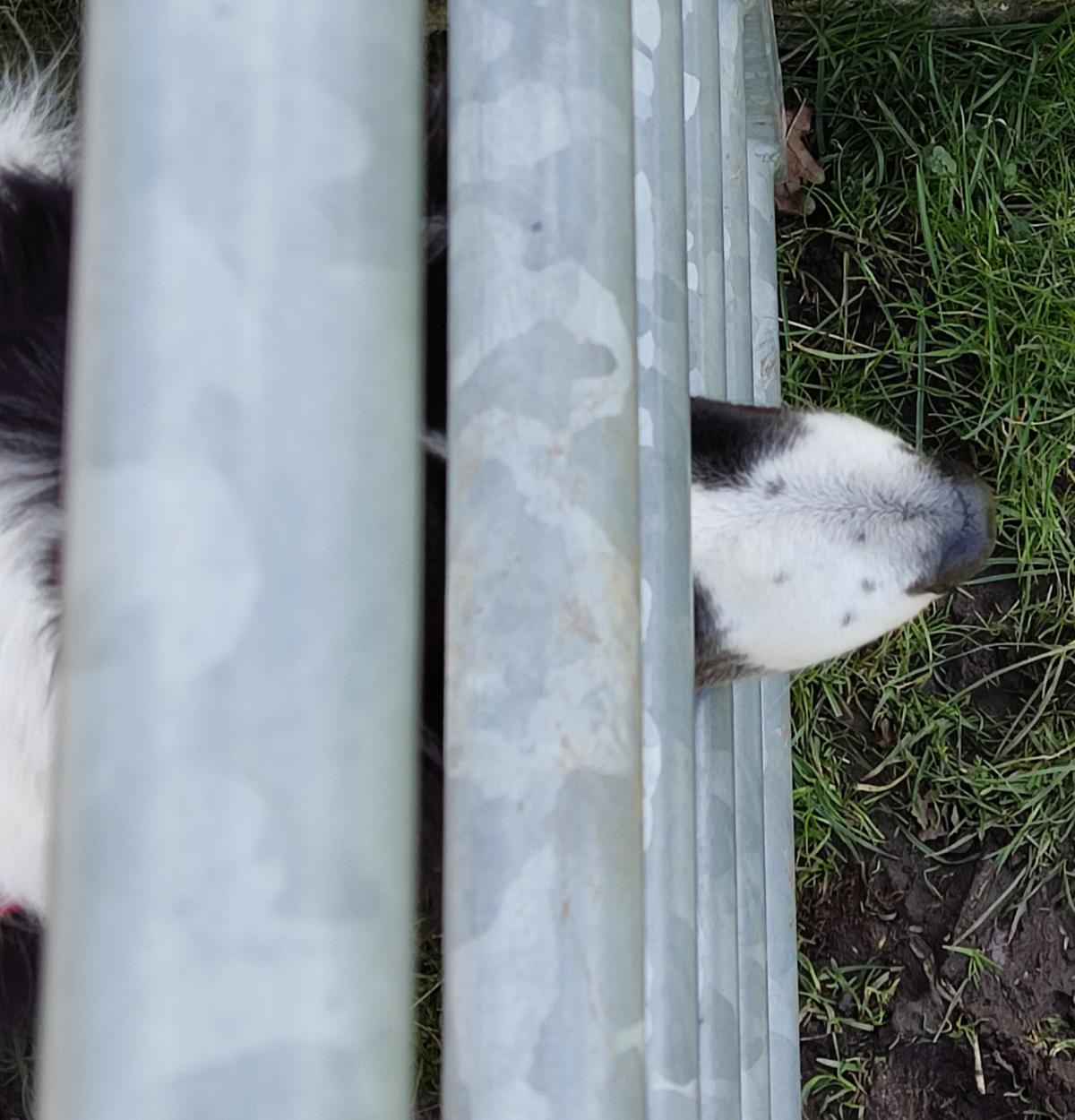
Skye Blue's nose through gate..he's watching the lambs at play!
Level
Get down to Fido’s level. You will make a photo loads better if you can get down with your dog! They may wonder why you’re suddenly there and get too close, so it 's often very useful having an ‘assistant’ to hand generally - plus they can help you get up again once you’re done…
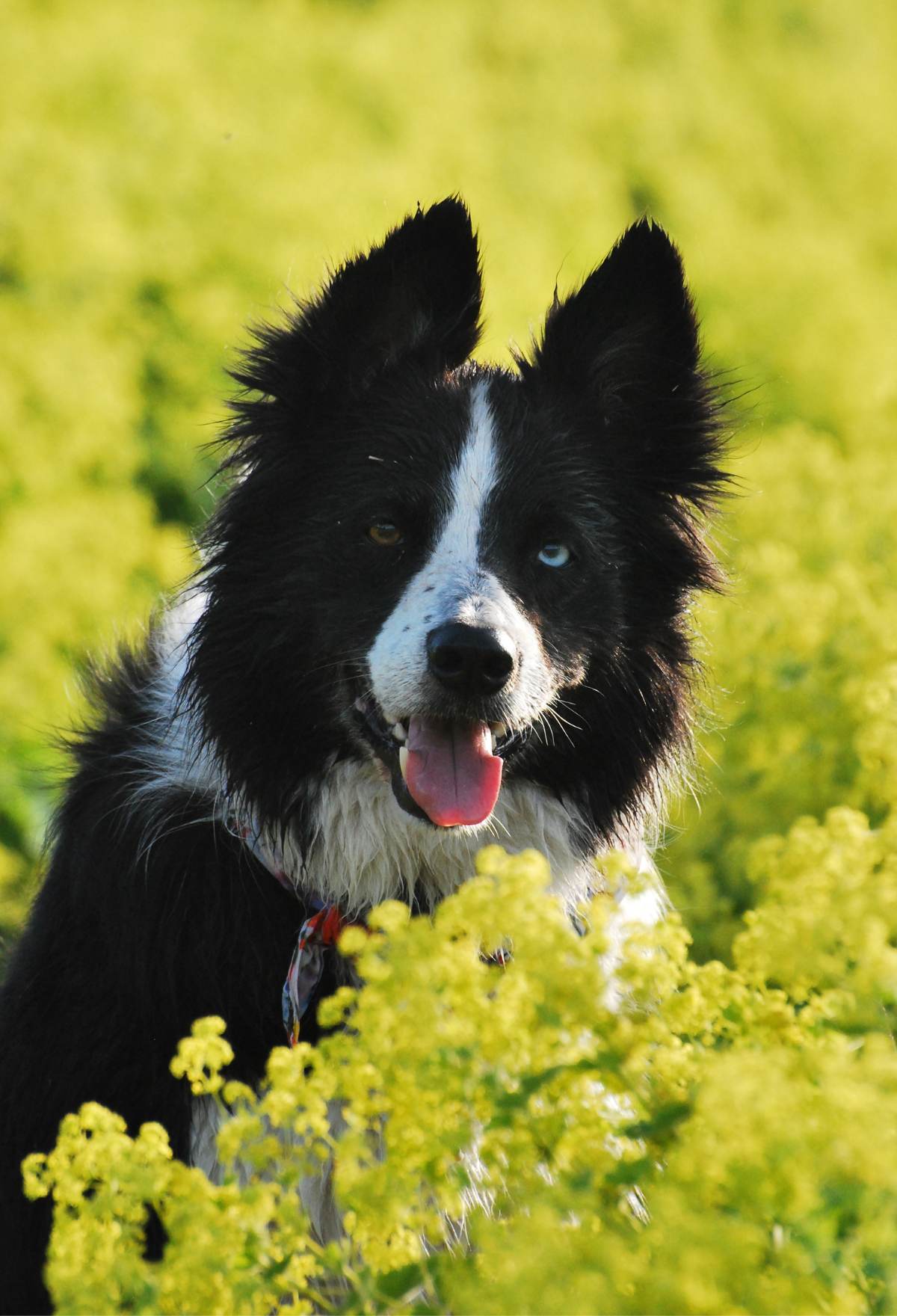
Yellow flowers at Grimwith Reservoir. S/S 1/1000 f5.6.
Framing is really important - there are various photographic 'rules*' such as the Rule of Thirds, don't have your subject looking out of the image, have a level horizon and so on. As I said earlier, there are thousands of books out there with all these full of tips and tricks to help you take a fun and memorable image. (*Not forgetting of course that rules are made to be broken sometimes!)
OPPORTUNITY KNOCKS
Try to have your phone / camera ready for the fun photos - for instance Skye Blue will usually investigate up / behind a tree and so I can be fairly sure he will pop his head round the other side - or I can move so I can capture him looking up the tree (for squirrels / birds / who-knows-what). These are often the best photos - when Fido isn’t posing for you but doing what is interesting to them.
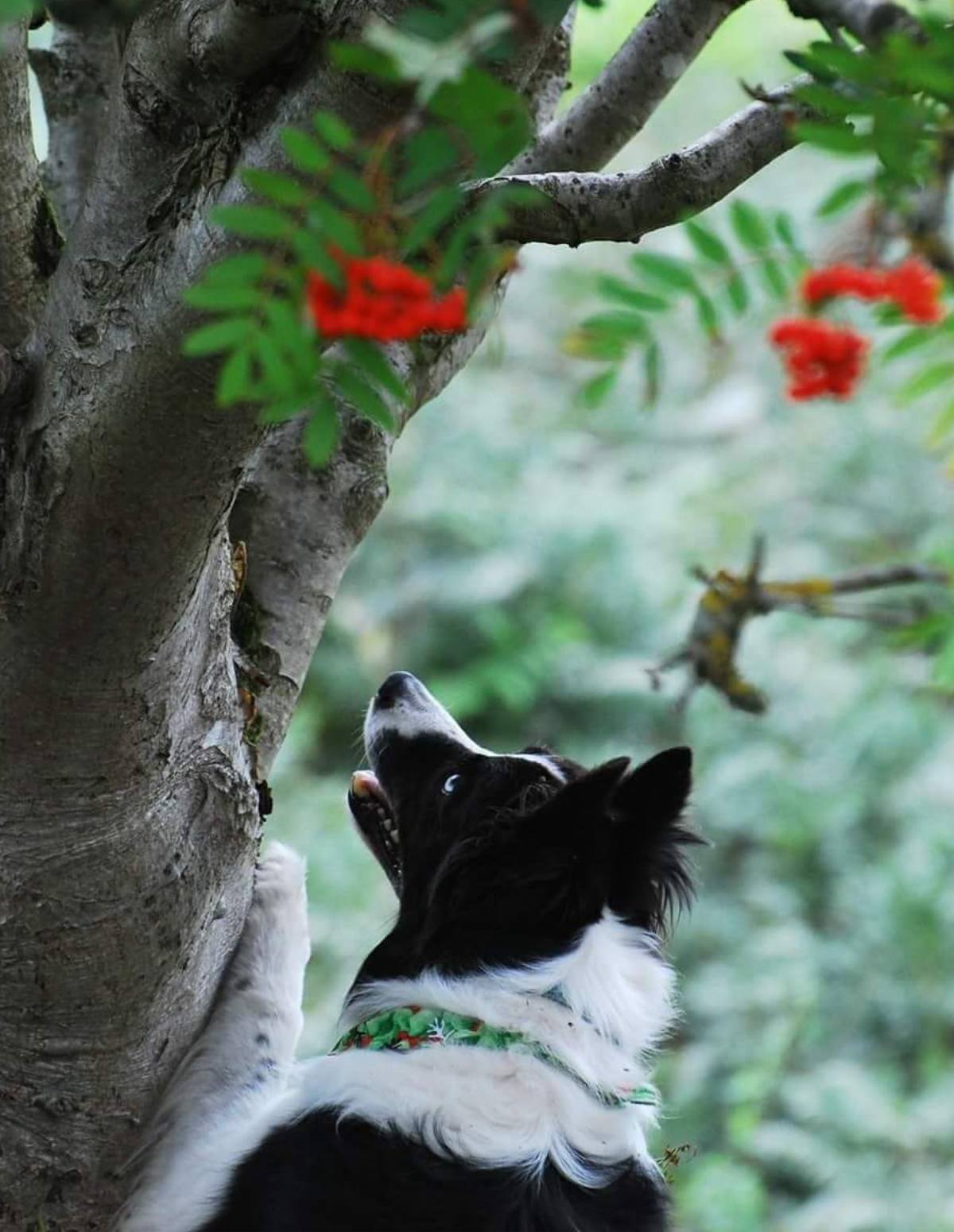
There was a neighbours cat in this tree! S/S 1/1000 f8
Or if your dog is having a play-date try to capture some of the fun. Here are Skye Blue and Finn doing their best at posing , but not necessarily at the same time!
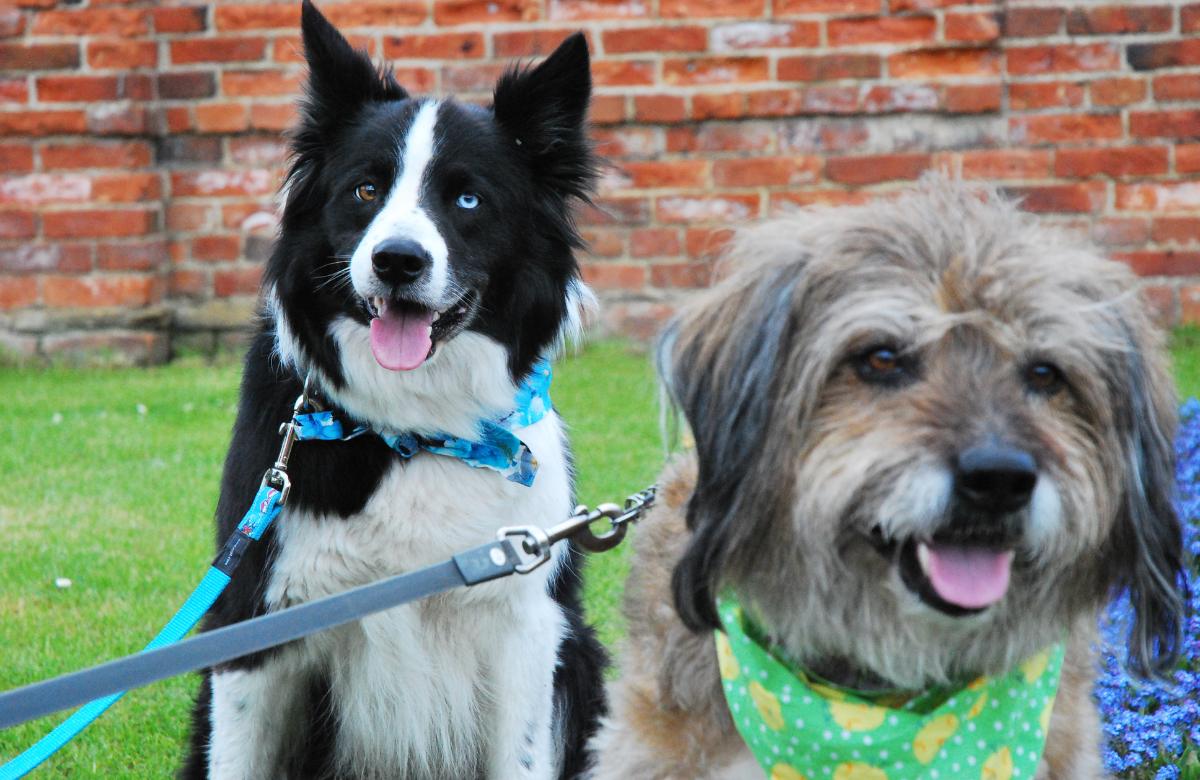 Try to have the two subjects equally far away from the camera... S/S 1/1000 but f1.8
Try to have the two subjects equally far away from the camera... S/S 1/1000 but f1.8
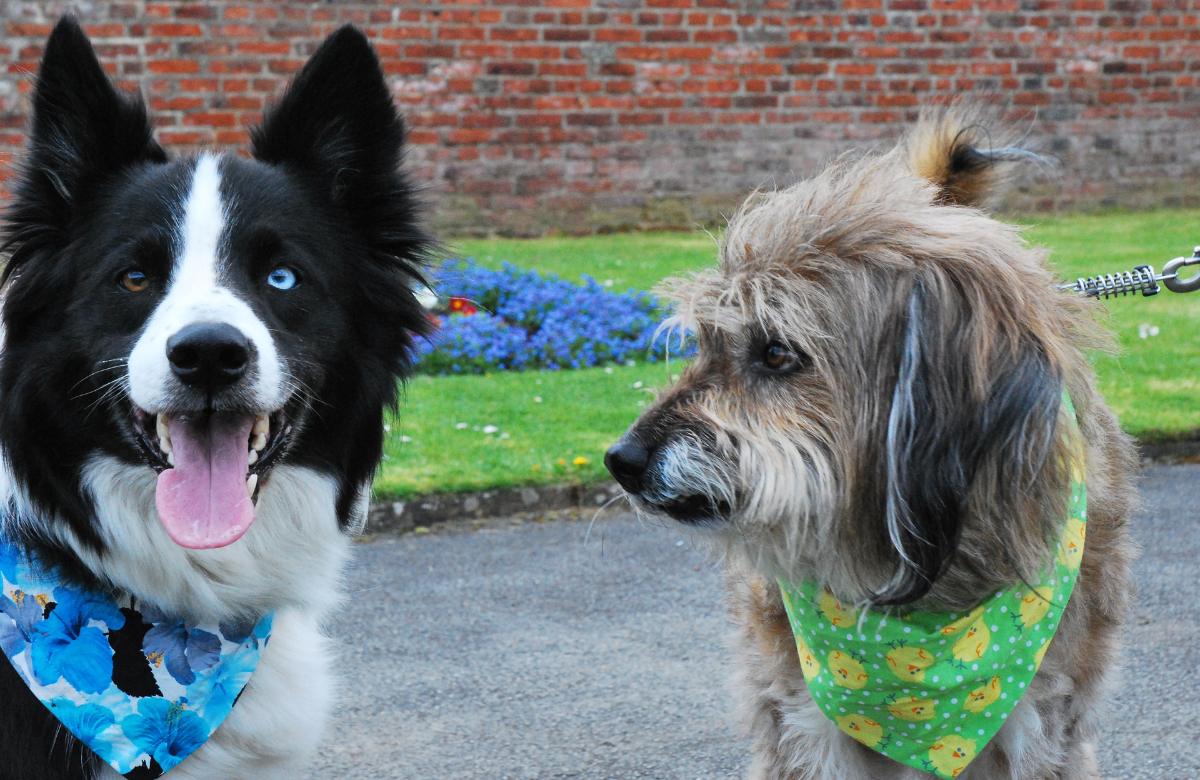 ...better, but would be great if they could both be looking at the camera at the same time! S/S 1/1000 f5.6
...better, but would be great if they could both be looking at the camera at the same time! S/S 1/1000 f5.6
 ...hmmm, sometimes it just isn't going to happen! S/S 1/1000 f5.6
...hmmm, sometimes it just isn't going to happen! S/S 1/1000 f5.6
Same if they come out of water - I love taking photos of Skye shaking himself. If you can get down to his / her level and head-on when they come out then you’re on to a potential great image. It doesn't always work of course, but the joy of digital is that you can keep pressing the shutter and you may be lucky. Again, a really fast shutter speed is good here.





Shaking water S/S 1/1000 and 1/2000 f5.6 - f8
Snow is often fun for dogs, and beaches of course. You’ll need to be very careful with sand / cameras - I've nearly had disasters with sand in my big camera and it is meant to be proof against such things. But you can achieve some brilliant photos. You may well end up with wet legs mind you. You'll definitely need an assistant to throw balls and so on. Take a towel to keep your hands clean as possible, just tuck it into your trousers / belt / whatever.

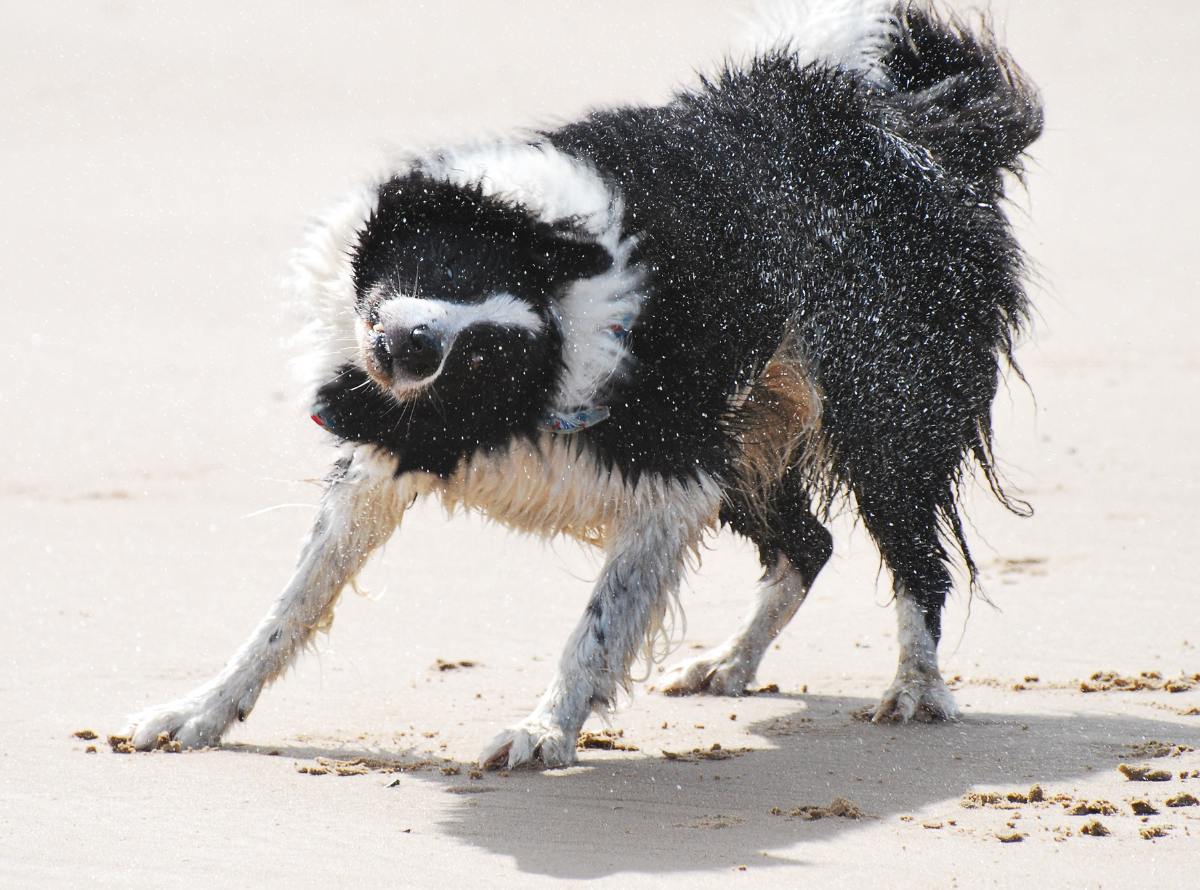
Skye Blue has always loved a good beach!
Woods. Jumping over branches / logs. Again, if you get yourself into a good position first and then have one or more assistants calling him/her over the obstacle there is the opportunity to take some cracking images. Most might not come off, but I am sure at least one will and that is all you need.
There are loads of things to do with photographing dogs, far more than I can cover here, and as I said my experience is very much a case of trials and (plenty of) errors. Just go out and have a play really. It will make daily walkies even more fun!
Have fun with your dog. Never be disappointed with them for not performing as you hoped, and never put them in situations they're not happy about. Give them time and their personality will shine through, and they may do something totally unexpected, giving you the opportunity to capture them at their best!
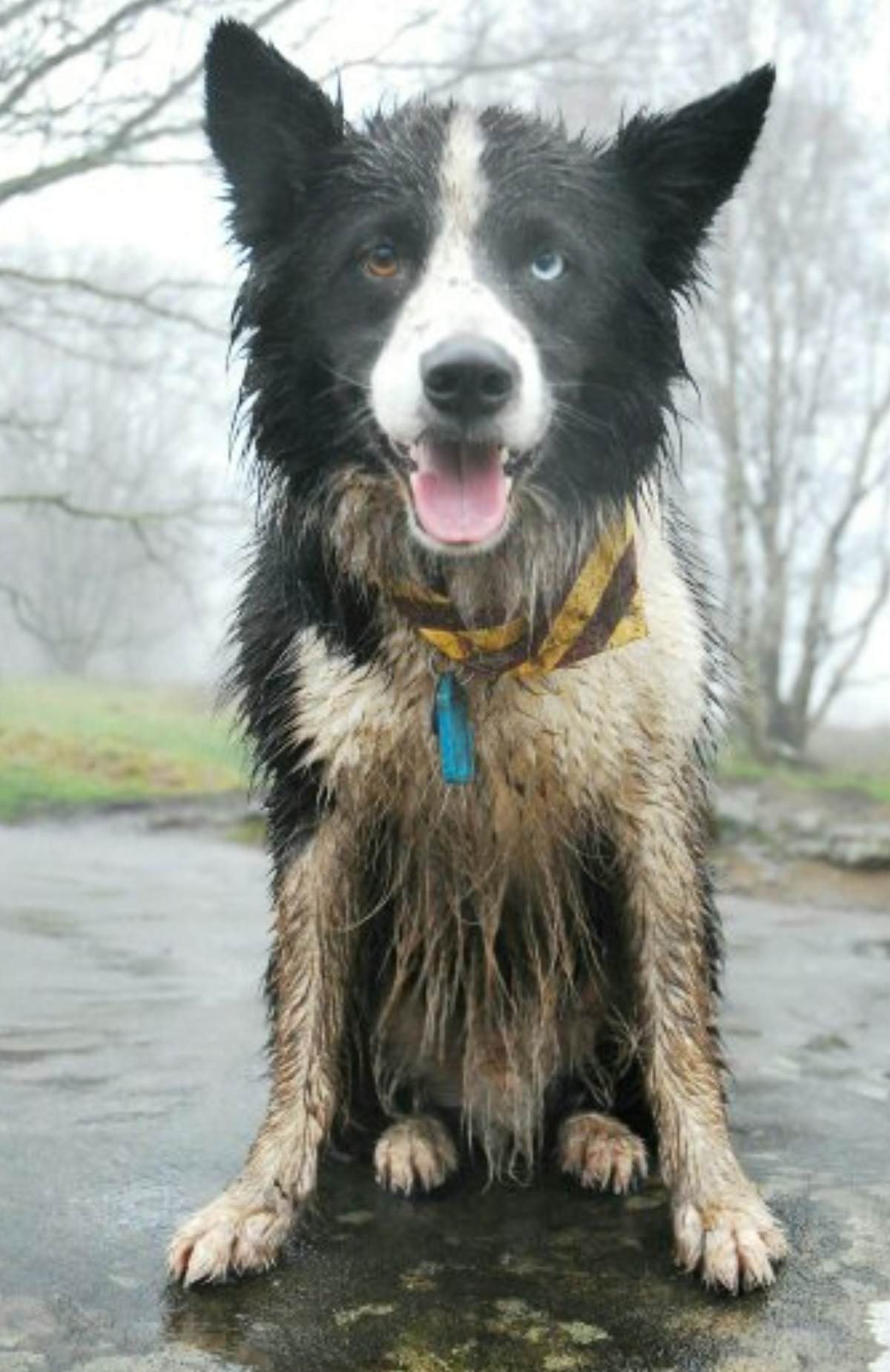
Skye Blue...very mucky, but very pleased with himself!
 (1).png)
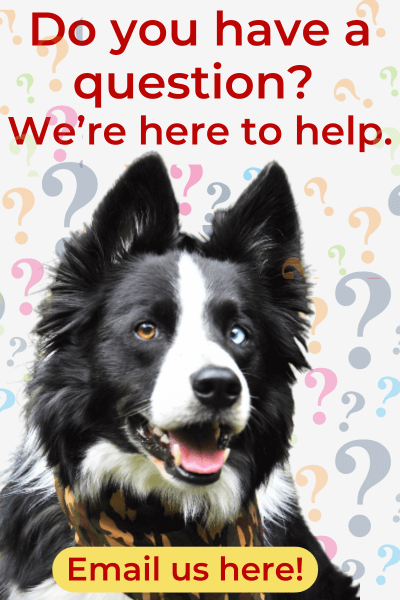

Some good pointers have tempted me to get the big camera out again, thanks.